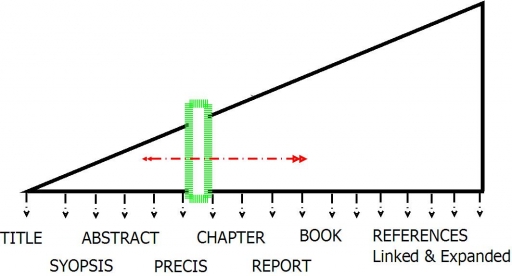Once you have the definitive response to a fact, something composed as a wiki that has been thoroughly reviewed I'd then like to see this thinking, initially just in words, animated via a slider, the kind of volume control we're used to seeing, only this, instead of increasing the volume of sound, increases the number of words.

In this way you choose your moment to read a bit, a bit more, or a lot, the whole thing, and or everything (in theory) that went through the author's mind when they wrote their chapter/boo/report in the first place by having not just the links, but the references open and ready to read in an instance.
Indulgent?
The expert mind does this anyway. By the time you've read so extensively on a subject that you hear its authors speaking, you tap into a form of this. You could at any moment offer a summary, or talk for hours on 'your' subject.
I would like this opportunity from the start, from the point of ignorance, to nudge back and forth, to 'rock n roll' as a soundengineer would put it, finding the point to cut a sound track, the 'sweet point' for where I was at, where enough was being said to engage me ... or, were I about to alight from a train, a bitsize thought on which I could chew 'til the opportunity arose to indulge and nudge this 'text volume control' along the scale.
Now think of this as a slice in a pie.
| From Drop Box |
Open it out and you migrate away from text alone to include stills, video and sound. For example, the image-based expression of this concept, and a particular issue/idea/fact/report, begins with a single image, like a book cover, or TV title sequence ... as you run along our 'volume control' the number and range of images expands.
Just a thought.